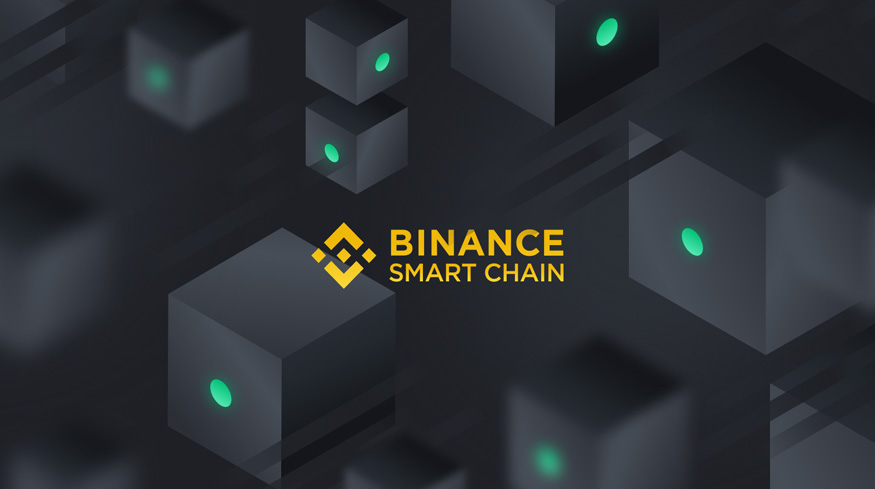Investing in cryptocurrencies and earning rewards from various resources isn’t a new concept. In the past decades, many crypto-enthusiasts have joined this movement. They provide their computing or financial resources in the hope of more rewards from a decentralized system. Decentralized financial platforms (DeFi) experienced considerable growth in terms of adoption and total value locked. They brought many new concepts and ways to earn more to the cryptocurrency ecosystem. Two of the most important new ideas are yield farming and liquidity mining.
Liquidity mining is the process of locking your assets in specific pools in DeFi platforms and earn rewards from trading fees. Yield farming is the strategy to move your holdings between various pools and platforms to maximize the earnings.
DeFi platforms should always provide incentives to attract liquidity providers. They surely need liquidity in their decentralized exchange platforms to be able to offer trading opportunities to the end-uses.
As a result, liquidity providers receive a portion of tradings from each pool to be incentivized and lock their assets more. Some investors move their holdings between various pools and platforms to find the best-performing ones.
Liquidity mining and yield farming are different on numerous platforms regarding the mining process and reward calculations.
What is Yield Farming, and What is It For?
Yield farming is somehow more complex than simple liquidity mining. In this process, investors are looking for the maximum returns from their locked assets. They use automatic systems to move their holdings between various DeFi platforms with different reward mechanisms.
Compound platform was the first DeFi platform to introduce yield farming. After the explosion in the value of COMP tokens, other platforms started to offer the same incentive. They attracted investors by providing them chances to move their assets and maximize the earnings automatically. Now, most of the DeFi platforms offer liquidity mining and yield farming together.
How to Do Yield Farming?
As mentioned before, yield farming is the more complex strategy for liquidity mining. In other words, you need more knowledge and risk management to do yield farming. It includes moving assets between various liquidity mining systems to maximize the returns.
There are many strategies for maximizing earnings from yield farming. The most important one is to be early at providing liquidity in vaults and continuously monitoring them.
Many platforms provide the opportunity of yield farming and liquidity mining to investors. Almost every DeFi platform has this option. It creates the first thing to keep in mind when entering this kind of investment: finding the best liquidity mining platform. Some people prefer less volatility in their earnings and locked assets. They can use the platforms that only support stablecoins. There are some investors with more holdings that prefer more complex platforms.
Where can I do Yield Farming?
Yield farming is available on many DeFi platforms on different blockchains. In the world of DeFi, two blockchains, Ethereum and Binance Smart Chain, are hosting most of the active platforms. Each blockchain has specific pros and cons and has been successful in attracting developers to make DeFi platforms. We’ll discuss both blockchains and the DeFi platforms in them so you can choose the best option for your needs.
Ethereum

The first DeFi platforms were launched in Ethereum. The ability to trade and swap ERC-20 tokens attracted many users to these platforms. Smart contracts have been born on Ethereum, and developers created platforms based on these contracts significantly easier on Ethereum. Some of the most popular platforms that offer liquidity mining and yield farming on Ethereum are:
Compound
Compound was the first platform to introduce yield farming to users. It lets you lend and borrow tokens. Liquidy miners and yield farmers provide ETH or any ERC-20 token to the platform and receive trading fees. Besides, the COMP token is distributed between liquidity miners that incentivize them more. COMP is the Compound platform’s governing token and has experienced a rise in price in the past months.
UniSwap
UniSwap is one of the most popular decentralized exchanges that offer the ability to swap any tokens. The platform requires liquidity providers to lock an equal amount of two tokens in a pool. As a result, they” receive trading fees when any user swaps the tokens in a pool.
SushiSwap
SushiSwap offers various yield farming options to investors. One of the most popular ones is Sushibar. You stake SUSHI tokens in this platform and receive xSUSHI tokens. The token distribution comes from 0.05% of the exchange trading fees. There are more options for yield farmers in SushiSwap that Onsen pools are among the most attractive ones.
Balancer
Balancer liquidity mining includes supplying capital to liquidity pools in this platform. You’ll receive BAL tokens as a result of liquidity providing in Balancer. BAL is the governance token of the Balancer platform.
Aave
Aave provides the opportunity to lend and borrow tokens. It uses various algorithms to calculate the rewards of liquidity providing to users. Many professional yield farmers use Aave because it has some attractive features like flash loans. These loans sometimes result in a considerable return for yield farmers.
Binance Smart Chain
Binance Smart Chain is one of the most popular alternatives for those developers that need another blockchain sith support for smart contracts. They can build DeFi platforms in this blockchain that provide various opportunities for trading and swapping tokens. Some of the most popular DeFi platforms in BSC are:

PancakeSwap
PancakeSwap – another DeFi with a food-related name – provides many opportunities to liquidity miners. They can stake their tokens in liquidity pools or even participate in lotteries. NFTs are other options in PancakeSwap that attract many users. Liquidity miners sometimes stake their LP tokens and receive CAKE tokens in rewards that increase their earnings.
Venus
Venus is a decentralized money market for lending and borrowing tokens. You can deposit any tokens like BNB, ETH, and many stablecoins to receive rewards. Liquidity miners use their interests as collateral to receive loans. Some of them mint VAI stablecoin with their interests.
Beefy.Finance
Beefy.Finance is the yield optimizer for BSC. In simple words, it provides you the opportunity to use multiple yield farming platforms and maximize your earnings in Binance Smart Chain. Beefy has multiple vaults with various pools that are aimed to maximize yield farming earnings. These vaults do the farming automatically and with a focus on increasing the rewards.
BakerySwap
BakerySwap provides the opportunity for staking in Ethereum 2.0 but in the Binance Smart Chain blockchain. It uses the BETH token and has some advantages compared to working directly on the ETH chain. For example, there is no minimum limit of 32 ETH for staking in the BakerySwap platform. You receive BAKE tokens by providing liquidity for BETH pools.
Tron

TRON blockchain has joined the DeFi competition and aims to attract DeFi developers. The liquidity mining options on this blockchain can attract those users who want a faster DeFi blockchain.
Sun.io
Sun.io is a decentralized lending and borrowing platform on TRON. You have multiple opportunities to provide liquidity on this platform. Next to the TRX token, there are many other supported tokens for liquidity mining in Sun.io. For example, USDT, BTC, ETH, SUN, and JST tokens are supported,
Is Liquidity Mining Safe?
Liquidity mining is like any other investment strategy. The safety of this strategy relies on many things. The first thing is the security of smart contracts. You should be careful about the mining and farming platforms and only choose the trusted, secure ones. The risk of losing money in liquidity mining has to be considered, too. Professional investors always distribute their holdings in various pools and vaults to minimize the risks.
Rug Pulls
Rug pull is one of the risks of DeFi platforms like Uniswap. It has happened many times in the past. Rug pulling happens when a scam token is minted in a DeFi platform and attracts many users to swap their ETH for the new coin.
For example, the malicious liquidity provider mints a token on Uniswap, SushiSwao, etc. They attract investors to buy the new token with their ETH or other valuable tokens. The process happens with fake landing pages, telegram channels, and hypes in other social networks. After many people swap their tokens with the new ones, liquidity providers drain ETH from the pool, and token holders will only have a worthless coin in the pool.
Conclusion
Liquidity mining and yield farming are attractive opportunities for cryptocurrency investors. They can stake their holdings and receive earnings from traders. But the risks of investment are always there. You should be careful about choosing the best mining platform and also monitoring your holdings on vaults. Liquidity mining can become the first choice of investment for many people. It helps the DeFi platforms offer more features to end-users, and it’s why they always try to keep the miners.

